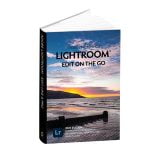ARH18
New Member
- Joined
- Jul 12, 2018
- Messages
- 4
- Lightroom Experience
- Intermediate
- Lightroom Version
- Lightroom Version Number
- 7.4
- Operating System
- macOS 10.13 High Sierra
Hi, sorry if this has been asked before but I'm struggling to find an answer!
I use a Nikon D750 and shoot in RAW (NEF). I transfer the NEF files to the hard drive on my mac from the camera card. When importing to Lightroom I have been advised to use the copy to DNG option, which I have been doing for a while. This gives me a few problems, one is that the storage is of course doubled, the original NEF file is never used as the DNG file is the one edited, if I choose to delete the DNG file from Lightroom and the hard drive it doesn't delete the NEF file which means I have a number of NEF files sitting on the hard drive which I don't want and if I forget to delete them through Finder then I'll never find them and continue to have wasted space.
So to my questions...
What's the advantage of copy to DNG over just importing the NEF files?
Is there any reason to not edit NEF files directly?
What do others do, how to overcome wasted storage and making the NEF files redundant?
Is it worth keeping the NEF files once converted to DNG?
As ever with this type of software there are so many options and often the solution comes down to preference or opinion - help!!
Thanks,
Andy
I use a Nikon D750 and shoot in RAW (NEF). I transfer the NEF files to the hard drive on my mac from the camera card. When importing to Lightroom I have been advised to use the copy to DNG option, which I have been doing for a while. This gives me a few problems, one is that the storage is of course doubled, the original NEF file is never used as the DNG file is the one edited, if I choose to delete the DNG file from Lightroom and the hard drive it doesn't delete the NEF file which means I have a number of NEF files sitting on the hard drive which I don't want and if I forget to delete them through Finder then I'll never find them and continue to have wasted space.
So to my questions...
What's the advantage of copy to DNG over just importing the NEF files?
Is there any reason to not edit NEF files directly?
What do others do, how to overcome wasted storage and making the NEF files redundant?
Is it worth keeping the NEF files once converted to DNG?
As ever with this type of software there are so many options and often the solution comes down to preference or opinion - help!!
Thanks,
Andy

 Are you using the cloud-based Lightroom apps for iOS, Android, Windows, Mac, and Web? Then you'll love my book,
Are you using the cloud-based Lightroom apps for iOS, Android, Windows, Mac, and Web? Then you'll love my book, 